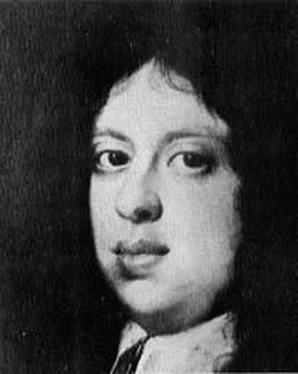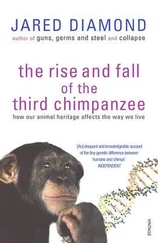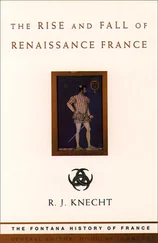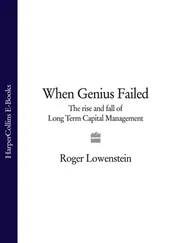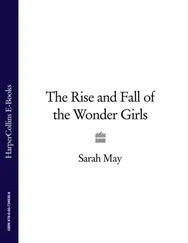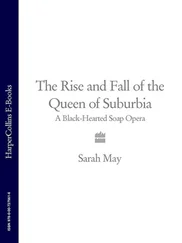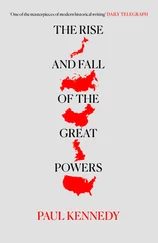Cosimo also raised large sums of money by selling merchants the exclusive right to deal in certain essential commodities such as flour or salt – and then, for a fee, issuing tradesmen with special licences enabling them to evade the monopoly. Savage punishments were devised for those who attempted to side-step the regulations: bakers caught trying to avoid the flour monopoly were threatened with the galleys; and extracting salt from fish brine was declared a capital offence. Occasionally the money raised by taxation and the sale of monopolies was used for some worthwhile purpose, the purchase of books for the Grand Ducal library or miniatures to add to the collection formed by Cardinal Leopoldo. More often it would be lavished on expensive gifts of gloves or scent, on cases of Chianti to some person Cosimo had met in England, on holy relics of dubious provenance, or on some new extravagance at Court.
No member of that Court was more extravagant than the Grand Duke’s younger brother, Francesco Maria, the latest cardinal in the family. Cheerful, carefree and immensely fat, Francesco Maria had moved to Lappeggi on his uncle Mattias’s death, but the villa was not nearly grand enough for his taste. He asked the architect, Antonio Ferri, to make various suggestions for its embellishment. Of the designs submitted he unerringly picked the most imposing and asked what it would cost. Ferri named a sum which was more than the Cardinal had at his disposal. ‘And if I spend no more than thirty thousand crowns, but still have the work carried out to this design, how long would it last?’ Ferri reckoned he could guarantee it would stand for eighteen years. ‘In that case carry on,’ the Cardinal instructed him. ‘Eighteen years is enough; it will serve out my time.’ 1
The work was soon finished. The gardens were laid out to rival those at Pratolino, and Francesco Maria settled down to indulge himself for his appointed span. He had an infinite capacity for self-indulgence. He loved scent, and so one of the rooms at Lappeggi was turned into a perfumery. He loved the company of young men, so he filled the villa with them, inviting them to gamble at his expense and to wait on him at table, dressed as girls. He had a passion for eating, so dosed himself with emetics to make room for a second dinner after his first. He enjoyed practical jokes, so he lavished money on those who could devise amusing ones and help him perpetrate them. He lavished money, too on his servants and would throw packets of coins from the villa windows onto the lawn where they wrestled for them both with each other and with the peasants of the neighbourhood. His servants cheated him at every opportunity, but he affected not to care and even to encourage them in their pilfering. At Easter he would have them brought before him to confess, and would then give them absolution, announcing that he willingly presented them with all they had taken. In constant need of more money he pursued new benefices and stipends with unremitting assiduity, and, if he obtained them, handed over the work involved to a secretary.
It naturally distressed Cosimo deeply that this lazy, insanely extravagant brother of his should have so much influence over his heir, the Grand Prince Ferdinando. Ferdinando had grown into a good looking young man, sprightly and amusing, intelligent, artistic and independent, with far more in common with his French mother than with his lugubrious father. By the age of fifteen he had already mastered the difficult art of ivory-turning and produced pieces of which any collector would have been proud. He was also a gifted musician, an excellent performer on the harpsichord and a singer of unusual skill and charm. In later yean he had a theatre built on the third floor of the Villa Pratolino and – unlike his uncle Francesco Maria who instructed the actors at Lappeggi to gabble through their parts in case he went to sleep in the middle of the performance – Ferdinando was responsible for the production at Pratolino of some remarkable works, including five operas by Alessandro Scarlatti with whom he conducted a long correspondence. He also corresponded with Jacopo Peri, Bernardo Pasquini and Handel, all of whom were invited to Florence to collaborate with him and his designers on various productions which gained high credit in musical circles all over Europe. Ferdinando was also a master impresario of pageants and was responsible for that memorable joust in the Piazza Santa Croce on Shrove Tuesday 1689 when a huge audience in wooden stands erected all round the square were regaled with a tournament between magnificently apparelled teams of European and Asian knights. Above all, as a patron and collector, he was both discriminating and eclectic, as good a judge of ceramics as of painting. He bought pictures by Raphael and Andrea del Sarto; he purchased Parmigianino’s unfinished Madonna dal Collo Lungo ; he employed Sebastiano Ricci and Giuseppe Maria Crespi at the Pitti Palace when they were both almost unknown; he saved altarpieces from neglect in Florentine churches – amongst others, Raphael’s Madonna del Baldacchino and Fra Bartolommeo’s San Marco – and paid for copies to replace them. On St Luke’s Day 1701, in the cloister of Santissima Annunziata he organized the first formal exhibition of paintings to be held in Florence, lent several pictures from his own collection and prepared the catalogue.
Yet, for all his talents and panache, Ferdinando was a disappointment to his father. Apart from anything else, there was his unfortunate passion for handsome singers, first for one Petrillo, who was found one day by the Prince’s tutor hugging and kissing him; and subsequently for a conceited Venetian castrato , Cecchino, who, having insinuated himself into his household, was to wield great influence over him. The Grand Duke decided that the sooner Ferdinando was married the better. He needed a wife to remove him from the bad influence of Cecchino and Cardinal Francesco Maria. The dynasty also needed an heir. Moreover, the obligations of marriage might awaken Ferdinando to the responsibilities of government for which at present he showed so little aptitude. Unfortunately the bride selected for him was scarcely likely to interest Ferdinando in the least.
Princess Violante Beatrice of Bavaria was a plain young woman, timid and impressionable. She adored her husband from the first moment she saw him, but he made no secret of the fact that he was marrying her only because his father had told him to. The marriage took place on a day so cold that two soldiers on guard at the Porta San Gallo froze to death, and the sixteen-year-old bride buried her face in her muff on the way from the Cathedral to the Pitti Palace. She had never been so cold, she said miserably. But she rarely complained again. She bored her husband and was sensible enough to realize that grumbling would merely turn boredom into dislike. He virtually ignored her. And anyway, she turned out to be barren. One day he left for Venice, where he contracted syphilis from a lady of noble family. And then, to the horror of the domineering Cecchino and to his patient wife’s distress, he added insult to injury by returning to Florence with a young mistress.
XXIV
THE LAST OF THE MEDICI
‘Florence is much sunk from what it was’
SINCE NO heir could be expected from Ferdinando, the Grand Duke Cosimo turned his attention to his second son, Gian Gastone. Previously he had not given much thought to him, and Gian Gastone was certainly not a young man who commanded much attention. Introspective, lonely, unhappy, he spent most of his time by himself, shunning the noisy, extravagant circles in which his brother and uncle lived, preferring to spend his time in botanical or antiquarian studies or in learning foreign languages, including English. He was a pleasant-looking man, gentle and considerate, but he had no close friends of either sex and evidently no ambitions. He certainly had no ambition to be a husband, and he contemplated the prospect of marriage to the bride selected for him with the deepest apprehension. The apprehension turned to horror when he saw her, for Anna Maria Francesca, daughter of the Duke of Saxe-Lauenberg and widow of the Count Palantine, Philip of Neuberg, was a woman of truly exceptional ugliness. She was also stupid and quarrelsome, ‘of enormous weight, immense self-will and no personal attractions’. She had few interests other than the more strenuous outdoor sports, and seemed quite content to spend the rest of her life in her dank, ugly castle in the gloomy, dispiriting village of Reichstadt near Prague to which she took her reluctant husband after their marriage in the chapel of the Elector’s palace in July 1697. Both the place and the woman disgusted him. Of stronger homosexual tendencies than his brother, he comforted himself with a sly but pretty groom, Giuliano Dami, and thought of little but escape from the slough of hovels and sedgebeds that was his prison.
Читать дальше
